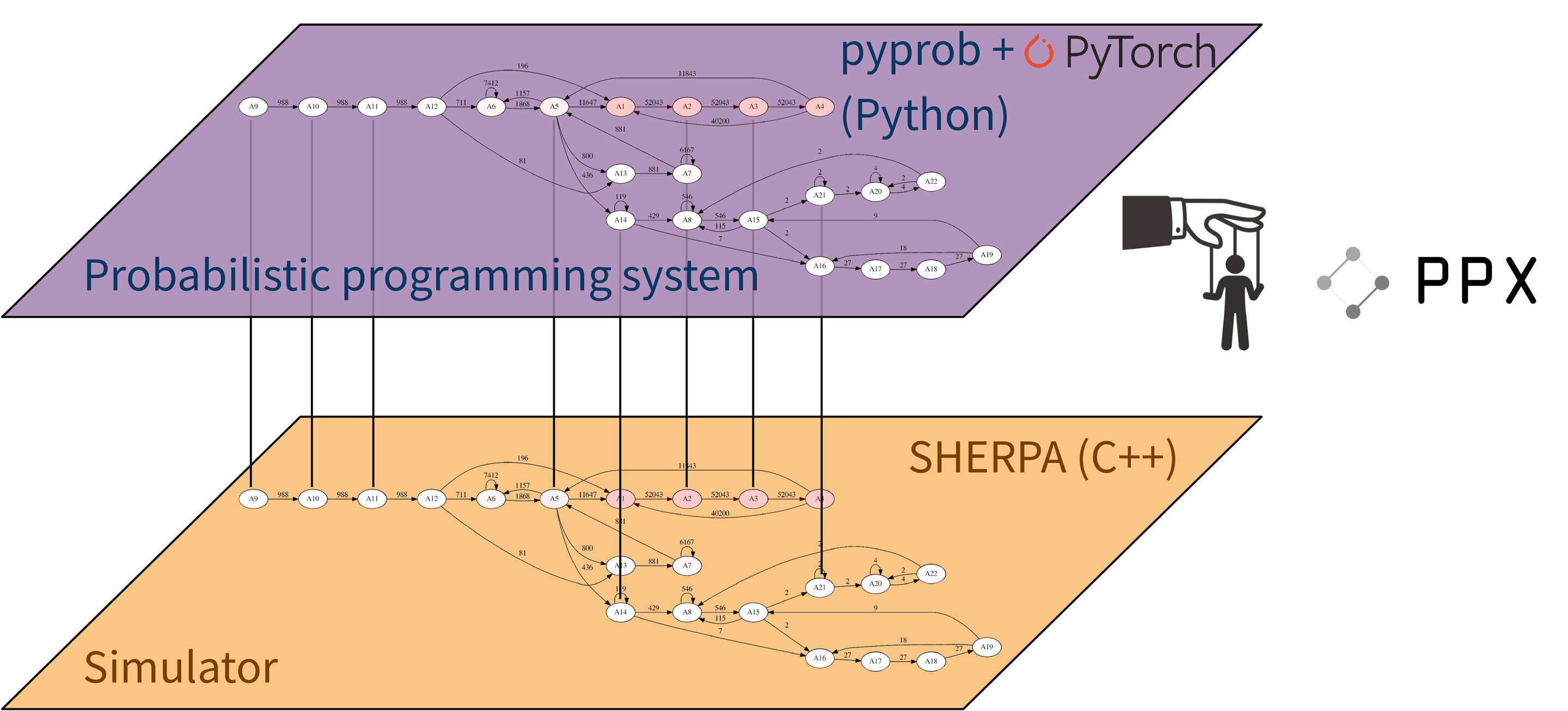In many science and engineering problems, the aim is to look at the output of the system or scenario and understand what led to that end state. For instance, in modern particle physics, a major part of the investigation involves understanding the events that led to the observation of a particular signal in a particular detector. Multiple physical simulators exist which aim to generate the outcomes of the detector. By adjusting the parameters of the simulator, one can try to recreate the observed outcomes which can help shed some light on the physics at play.
In the ETALUMIS project, as an Intel Parallel Computing Centre and in collaboration with NYU, LBNL, and National Energy Research Scientific Computing Center (NERSC) Big Data Center, we used probabilistic programming techniques to automatically explain and score events in the ATLAS detector by inferring the structure of the event, including the particles produced and their properties, from the observed detector response. The LHC physics community already has a series of simulation software tools both for underlying physics and for the modeling of the interaction of the underlying physics with the detector. Bringing these together with probabilistic programming techniques will enable us to tackle the fundamental inference problems in particle physics directly for the first time, offering considerable potential for new ways for particle physics experiments to tackle the detection of novel physics signatures.

Recently, as part of the Data-centric Manufacturing program with the UBC Composites Research Network (CRN) and the Data Science Institute, we also extended this methodology to monitor the curing process of composite materials. During the curing process of composite materials, usually the surface temperature of the piece being cured can be monitored; however, the internal state temperature variations of the piece in the end determine the mechanical properties. Luckily, a simulator exists that can predict material properties during the curing process. Our aim was to invert this simulator, and be able to predict composite material properties based on surface temperature.
Contributors
PI: Frank Wood (UBC)
Postdoctoral Fellow: Adam Scibior
Students: Andreas Munk – Saeid Naderiparizi – Andrew Warrington
Supporters


